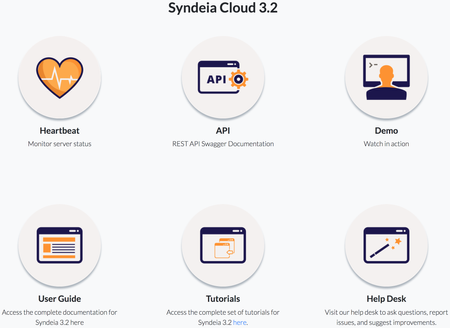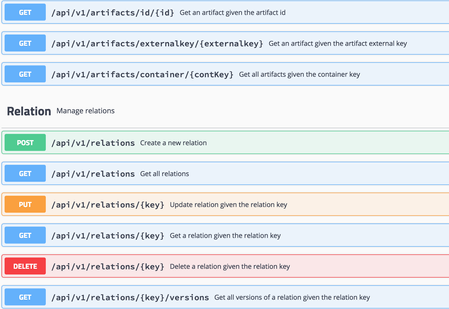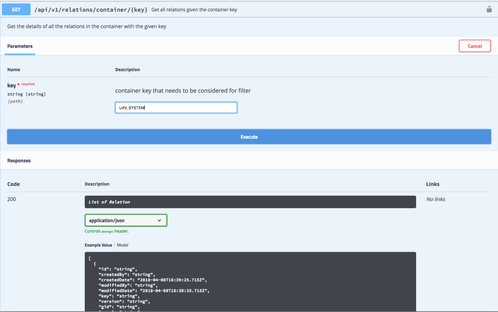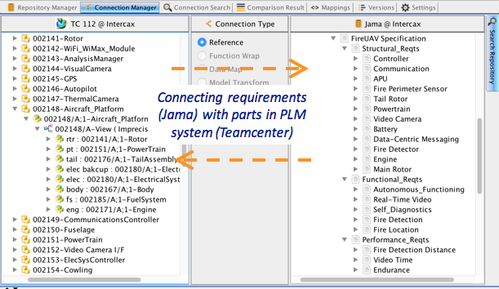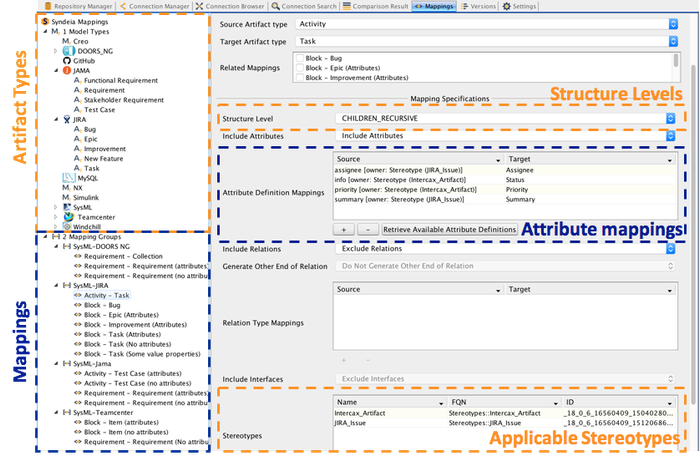We are very excited to bring you the following new features in Syndeia 3.2.
Syndeia Cloud
Syndeia 3.2 includes the first release of Syndeia Cloud, a fast and scalable platform for next-generation of model-based engineering. Syndeia Cloud provides services for building, managing, analyzing, querying, and visualizing the Total System Model of a product/system through its lifecycle, federating data from multiple disciplines, data repositories, and tools/ecosystems. Existing Syndeia plugins for SysML modeling tools are now clients of Syndeia Cloud. Users can collaboratively and concurrently develop the Total System Model for a product from multiple Syndeia clients. Syndeia Cloud can be deployed on in-premise machines or on cloud platforms, such as AWS or Azure.
Syndeia Projects
Users can now create Syndeia projects that can serve as the Total System Model for any product/system, federating and connecting information from multiple related projects originating in different disciplines and tools. Users can concurrently work on the same Syndeia project from different Syndeia clients. For example, users can define a Syndeia project for an Unmanned Aerial Vehicle (UAV) and can connect multiple SysML models (same or different SysML tool), JIRA projects, Windchill projects, DOORS-NG projects, or GitHub repositories to that same UAV project on Syndeia Cloud. This makes it possible to truly build a federated and integrated Total System Model for the UAV system. Syndeia projects and their contents can be accessed via Syndeia clients and Syndeia Cloud's REST API.
Users can create versions (snapshots) of Syndeia projects, mark them as milestones, and compare versions to view the chronological list of events, such as relations created, modified, and deleted.
REST API
Syndeia Cloud provides a rich REST-based API that makes it possible to integrate Syndeia in other enterprise environments and develop new user apps. The REST API is published using Swagger, making it possible for developers to try out the API directly from the documentation without writing a single line of code. The same REST API is used by Syndeia clients, e.g. plugins to SysML modeling tools, to interact with Syndeia Cloud.
Syndeia Standalone Client
Syndeia 3.2 introduces a Standalone client that makes it possible for non-SysML users to use Syndeia's capabilities. For example, hardware engineers and software engineers can create relationships between physical design models in multiple PLM/CAD systems, software modules and code in multiple ALM systems, and requirements in multiple requirement management system at a fine-grained level. All of this data is backed by Syndeia Cloud and available to trace, query, and visualize. Users working with Syndeia Standalone client and SysML plugin clients can work together on the same project on Syndeia Cloud.
Mapping
Syndeia 3.2 brings a powerful capability to define custom mappings between element types in different tools and repositories. For example, users can create custom mappings between a SysML element type (such as Block, Activity, Use Case, or Requirement) to issue types in JIRA (such as Improvement, Story, or Task), including their attributes. Once defined, users can select specific mappings when generating models, such as drag and drop a SysML activity to create tasks in JIRA, or vice versa. The mapping information is stored with the relationships created between model elements and is used for downstream compare and sync operations. Pre-defined mappings are available as before. With great power, comes great responsibility. It is recommended that mappings are first defined by advanced users and then deployed for and used by other users. Organizations, groups, or individual projects can create standard mappings based on their model-based engineering methodology and practices.
Syndeia provides an easy-to-use interface to register artifact (element) types originating from different repositories and tools and create mappings between those types.
Stateflow
Syndeia 3.2 brings new capabilities for Stateflow. Users can now generate state behaviors (entry, do, exit) and transition behaviors (triggers, guards, and effects) in Stateflow from SysML state machine models, and vice versa. Capabilities to compare and sync are available as before. Users can turn off generation, compare, and sync for state and transition behaviors, and only work with states and transitions.
Other improvements and fixes
In addition to the new features introduced above, Syndeia 3.2 also brings improvements and fixes to existing capabilities with Simulink, Jama, Teamcenter, Windchill, DOORS-NG, JIRA, GitHub, MySQL, Creo, NX, and Excel.
